No Products in the Cart
Free 2-3 day USPS Priority Shipping With Orders Over $85
If you've recently purchased THCA trim, you might be staring at your bag wondering exactly what to do with it. You're not alone. Many cannabis enthusiasts buy trim because of its affordability but then find themselves uncertain about the best ways to utilize this budget-friendly material. The good news? THCA trim is incredibly versatile and can be transformed into everything from potent edibles to therapeutic topicals.
Despite being considered "budget material" compared to premium flower, trim contains valuable cannabinoids that shouldn't go to waste. The small leaves, sugar leaves, and plant material that make up trim may not look as appealing as full buds, but they're packed with THCA that can be converted into THC or used in its raw form for various applications.
In this comprehensive guide, we'll explore seven practical, tested methods for using THCA trim that will help you maximize your investment. Whether you're interested in making concentrates with THCA trim, creating THCA trim edibles, or exploring other THCA trim uses, we've got you covered with step-by-step instructions, pro tips, and safety considerations.
Let's dive into the practical world of THCA trim methods that will transform your trim from puzzling purchase to prized ingredient.
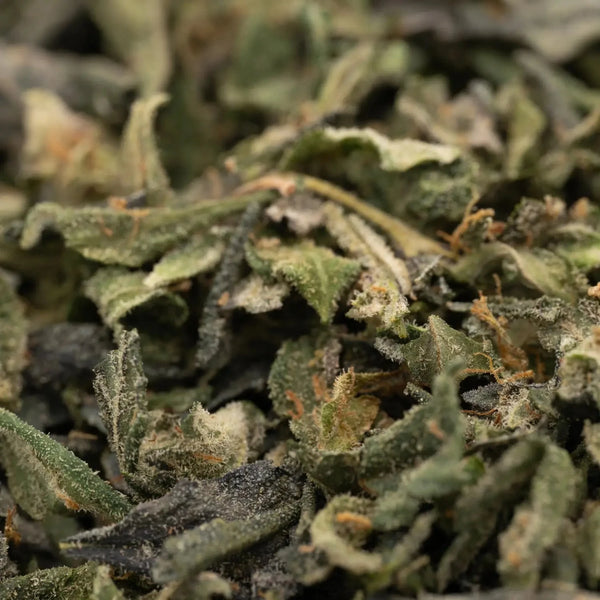
One of the most popular answers to "what to do with THCA trim" is making THCA trim butter. Cannabutter is the foundation for countless THCA trim recipes and allows you to incorporate cannabis into virtually any dish that calls for butter.
Before infusing your butter, you must decarboxylate (decarb) your trim. THCA trim decarb is essential because THCA (tetrahydrocannabinolic acid) is non-intoxicating in its raw form. Heat converts THCA into THC, which produces the psychoactive effects most users seek.
Decarboxylation Steps:
Ingredients and Ratios:
Step-by-Step Process:
Store your THCA trim butter in the refrigerator for up to 2 weeks or freeze for up to 6 months. Label with the date and estimated potency. To calculate potency, assume your trim contains approximately 10-15% THC after decarboxylation (though this varies). If you used 1 ounce (28g) of trim at 15% THC, you have roughly 4,200mg of THC total in your butter.
THCA trim tinctures offer precise dosing, fast absorption, and discreet consumption. Tinctures are alcohol or glycerin-based extracts that concentrate cannabinoids into an easy-to-use liquid form.
Alcohol tinctures use high-proof alcohol (190-proof Everclear is ideal) and extract cannabinoids more efficiently. They have a longer shelf life (3-5 years) but have a strong taste.
Glycerin tinctures use food-grade vegetable glycerin. They're sweeter tasting and suitable for those avoiding alcohol, but they're less potent and have a shorter shelf life (1-2 years).
Materials Needed:
Walkthrough:
Start with a conservative dose of 0.25-0.5ml (about 5-10 drops) under the tongue. Hold for 30-60 seconds before swallowing for sublingual absorption. Wait 45-90 minutes to assess effects before taking more. Keep a dosing journal to find your optimal amount.
Store THCA trim tinctures in amber bottles away from light and heat. Alcohol-based tinctures last 3-5 years, while glycerin tinctures last 1-2 years. Always label with creation date and estimated potency.
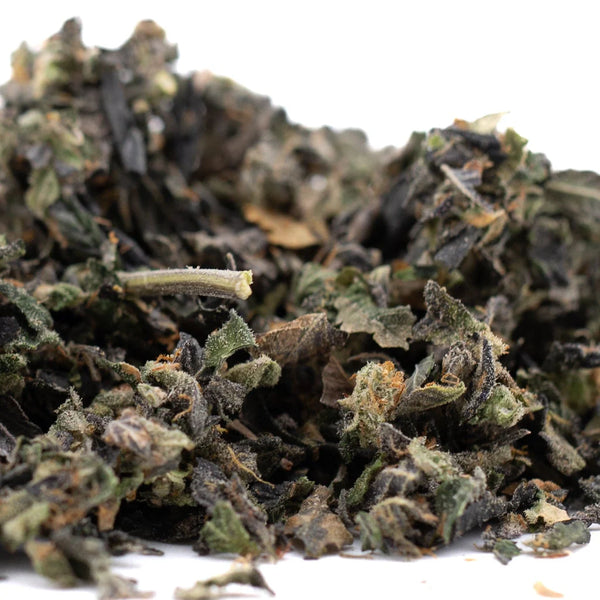
Smoking THCA trim is one of the most straightforward methods, though it requires some preparation for the best experience. While trim won't provide the smooth, flavorful experience of premium flower, it can still deliver desired effects when used properly.
Unlike edibles, smoking THCA trim doesn't require pre-decarboxylation because the combustion heat instantly converts THCA to THC. The flame temperature (around 1,400°F) far exceeds the decarboxylation threshold.
For a better experience, mix your THCA trim with higher-quality flower in a 1:3 or 1:2 ratio (trim to flower). This improves flavor, smoothness, and overall effects while extending your premium flower supply.
Vaping is gentler on the lungs and offers more flavor than smoking. Optimal vaping temperatures for using THCA trim:
Effects from smoking THCA trim typically appear within 5-10 minutes and peak around 30 minutes. The experience may be less potent than smoking premium flower since trim contains lower cannabinoid concentrations. Expect effects to last 1-3 hours depending on tolerance and amount consumed.
Making concentrates with THCA trim is an excellent way to transform budget material into potent, high-quality products. THCA trim extraction allows you to separate and concentrate cannabinoids, creating products like rosin, hash, and other extracts.
Rosin pressing uses heat and pressure to extract cannabinoids without solvents, making it one of the safest home extraction methods.
Equipment Needed:
Process:
Yield Expectations: Expect 5-15% return on trim, meaning 1 ounce of trim yields approximately 1.5-4 grams of rosin.
Ice water hash (bubble hash) uses ice-cold water and agitation to separate trichomes from plant material.
Equipment Needed:
Process:
Yield Expectations: Ice water hash typically yields 10-20% return on quality trim.
Butane Hash Oil (BHO) and other solvent-based extractions are mentioned here for informational purposes only. These methods are dangerous without proper equipment, ventilation, and expertise. Butane is highly flammable and has caused numerous explosions. We strongly recommend leaving solvent-based THCA trim extraction to licensed professionals with appropriate facilities.
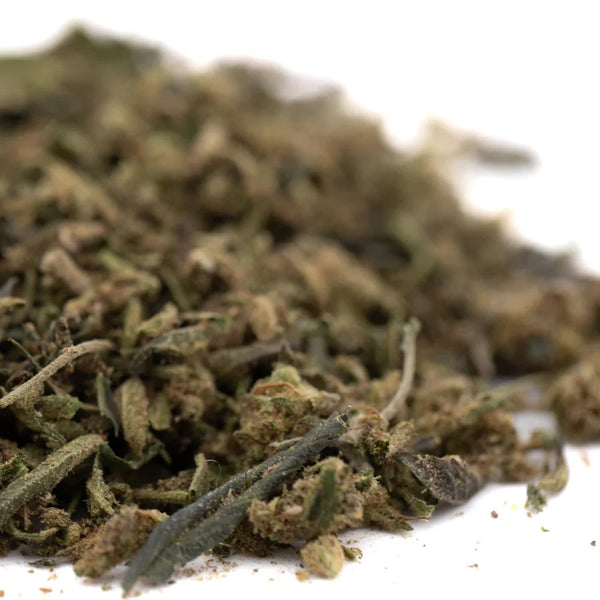
Beyond butter, THCA trim oil opens up numerous culinary possibilities. Infused oils can be used in virtually any recipe and offer health-conscious alternatives to butter.
Coconut oil: High in saturated fats (excellent for cannabinoid binding), neutral flavor, solid at room temperature, ideal for baking.
Olive oil: Heart-healthy, distinctive flavor, perfect for savory dishes, salad dressings, and drizzling.
MCT oil: Derived from coconut, remains liquid, flavorless, excellent bioavailability, popular for tincture-style use.
The slow cooker method provides consistent, low heat perfect for THCA trim oil infusion.
Ingredients:
Process:
Maintaining proper temperature is crucial when cooking with THCA trim. Too hot (above 250°F) and you'll degrade THC into CBN, reducing potency. Too cool (below 160°F) and extraction will be incomplete. The sweet spot is 180-200°F for optimal infusion.
Use your infused THCA trim oil in:
Start with a small test batch to gauge potency before making large quantities. Assume trim contains 10-15% THC after decarboxylation. Calculate total THC and divide by number of servings to determine per-serving dose. Always start with low doses (5-10mg THC) when trying new THCA trim recipes.
Topicals offer therapeutic benefits without psychoactive effects, making them perfect for targeted relief. Creating salves and balms is an excellent use for THCA trim.
This decision depends on desired effects:
Decarboxylated topicals: Contains THC and CBD, may provide stronger pain relief and anti-inflammatory benefits for some users.
Non-decarboxylated topicals: Contains THCA and CBDA, offers anti-inflammatory properties without THC, preferred by those seeking zero psychoactive compounds.
Both work well for topicals since cannabinoids don't typically cross the blood-brain barrier when applied to skin.
Ingredients:
Process:
Beyond coconut oil, consider:
Essential oils enhance therapeutic effects and mask cannabis aroma:
Apply THCA trim topicals for:
Apply generously to affected area and massage in. Reapply as needed. Effects typically appear within 15-30 minutes.
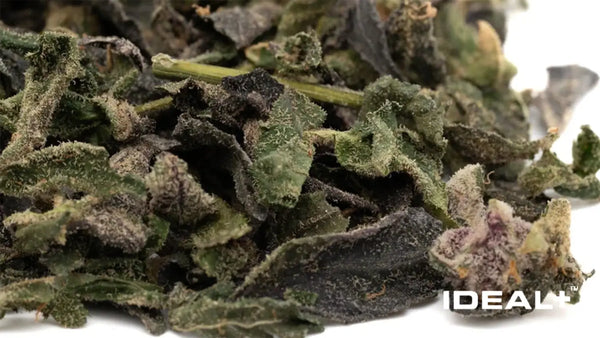
Raw juicing is the most unique method for using THCA trim and offers benefits distinct from all other methods. This approach harnesses THCA in its natural, acidic form without conversion to THC.
Unlike other methods, raw juicing requires fresh or minimally processed THCA trim—no THCA trim decarb necessary. Heat would convert THCA to THC, which defeats the purpose of this method.
Research suggests raw THCA offers:
THCA is non-intoxicating because it doesn't fit CB1 receptors in the brain the same way THC does. This makes raw consumption ideal for those seeking therapeutic benefits without psychoactive effects.
Basic Green Smoothie Recipe:
Process:
Start conservatively with raw THCA consumption:
Some advocates consume much higher amounts (10+ grams), but start low and increase gradually to assess your body's response.
Raw cannabis has a strong, vegetal, sometimes bitter flavor. Mask it with:
The stronger your other flavors, the less you'll notice the cannabis taste.
Without laboratory testing, calculating exact potency is challenging. However, you can estimate:
Home testing kits are available but vary in accuracy. The best approach is starting with small doses and adjusting based on effects.
When first learning how to use THCA trim, make small test batches. This approach:
Once you perfect a method, scale up to larger batches.
Always label your creations with:
This practice ensures safety, tracks what works, and prevents accidental overconsumption or use of expired products.
Heat safety: Never leave decarbing trim unattended. Use oven mitts and work in well-ventilated areas.
Solvent safety: If using alcohol, work away from flames and in ventilated spaces. Never use isopropyl alcohol internally.
Child and pet safety: Store all THCA trim products in locked, clearly labeled containers away from children and pets.
Consumption safety: Start low and go slow. Wait adequate time before taking more (2 hours for edibles, 45-90 minutes for tinctures).
Cannabis laws vary significantly by location. Ensure you:
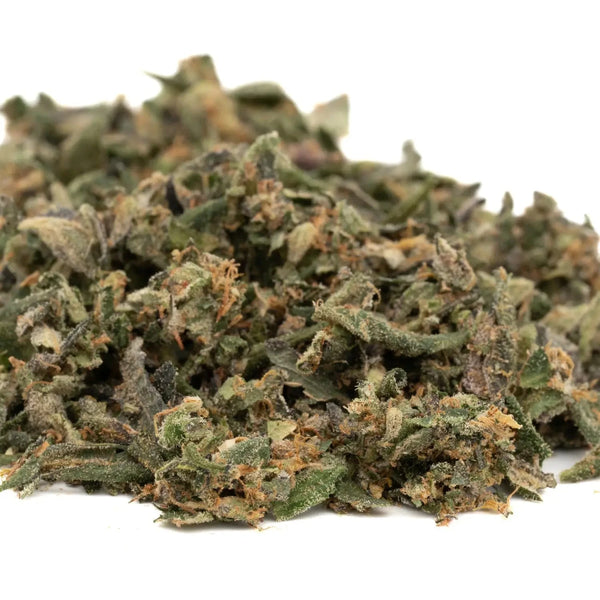
Q: Does THCA trim need to be decarboxylated for all methods?
A: No. THCA trim decarb is necessary for methods where you want psychoactive effects (edibles, tinctures, infused oils, butter). It's not needed for smoking/vaping (heat from combustion decarbs instantly) or raw consumption (where you want non-intoxicating THCA). Some topical users prefer non-decarbed trim for purely anti-inflammatory benefits.
Q: How much THCA trim do I need to make edibles?
A: For THCA trim edibles, plan on approximately 1 gram of trim per serving for moderate potency, assuming 10-15% THC content. A typical batch of 10-12 brownies would use about 14 grams (1/2 ounce) of trim. Adjust based on desired strength and your trim's actual potency.
Q: Can I mix different THCA trim methods?
A: Absolutely! Many users combine THCA trim methods. For example, make butter from most of your trim but save some for raw juicing. Use trim for both tinctures and smoking blends. The variety lets you experience different effects and applications.
Q: How long does it take for THCA trim edibles to kick in?
A: THCA trim edibles typically take 45 minutes to 2 hours to produce effects, with peak effects at 2-4 hours. Onset time depends on metabolism, stomach contents, and individual factors. Always wait at least 2 hours before consuming more.
Q: What's the best THCA trim method for beginners?
A: For beginners wondering what to do with THCA trim, we recommend starting with THCA trim butter or THCA trim oil. These methods are straightforward, forgiving of minor mistakes, and create versatile ingredients for many THCA trim recipes.
Q: Can I use THCA trim to make concentrates at home safely?
A: Yes, but stick to solventless methods. Rosin pressing and ice water hash are safe ways of making concentrates with THCA trim at home. Avoid solvent-based THCA trim extraction methods like BHO unless you have professional equipment and training—these are dangerous without proper setup.
Q: How should I store THCA trim before using it?
A: Store THCA trim in airtight containers (glass jars or vacuum-sealed bags) in a cool, dark, dry place. Properly stored trim lasts 6-12 months. Avoid exposure to light, heat, moisture, and air, which degrade cannabinoids and terpenes.
Q: Is smoking THCA trim harsh?
A: Smoking THCA trim can be harsher than premium flower due to higher leaf content and lower trichome density. Improve the experience by removing large stems, mixing with better-quality flower, using a water pipe for filtration, or vaping at lower temperatures instead of smoking.
Q: What's the difference between THCA trim tincture and THCA trim oil?
A: THCA trim tincture is an alcohol or glycerin-based extract taken sublingually (under the tongue) for faster absorption, typically used in small dropper doses. THCA trim oil is a fat-based infusion (coconut, olive, MCT) used primarily for cooking and baking, consumed in larger quantities as part of meals.
Q: Can I cook with THCA trim without making butter or oil first?
A: While technically possible to cook with THCA trim directly by adding decarbed material to recipes, it's not recommended. The texture is unpleasant, dosing is inconsistent, and cannabinoid absorption is poor without fats. Always infuse into butter or oil first for better results.
Now that you're equipped with seven comprehensive methods for how to use THCA trim, it's time to start experimenting. Each method offers unique benefits, whether you're seeking immediate effects from smoking THCA trim, long-lasting relief from THCA trim edibles, precise dosing with THCA trim tinctures, or therapeutic topicals.
The beauty of THCA trim uses lies in their versatility. Don't feel obligated to commit to just one method. Many users find that different THCA trim methods suit different situations—edibles for evening relaxation, tinctures for daytime dosing, raw juice for morning wellness routines, or topicals for post-workout recovery.
Remember the golden rule: start low and go slow. Whether you're creating THCA trim butter, experimenting with THCA trim extraction, or trying your first THCA trim recipes, conservative dosing prevents overwhelming experiences and helps you find your ideal dose.
The best method ultimately depends on your personal preferences, desired effects, available time, and equipment. Butter and oils offer the most versatility for culinary applications. Tinctures provide precise, discreet dosing. Concentrates deliver potency. Topicals offer therapeutic benefits without intoxication. Raw juicing harnesses THCA's unique properties.
Start with small batches when first learning what to do with THCA trim. Perfect your technique, document your results, and gradually scale up successful methods. Keep a journal tracking which THCA trim methods work best for you, noting dosages, effects, and any adjustments needed.
Most importantly, remember that using THCA trim is both an art and a science. While we've provided the scientific foundation, the artistry comes from your experimentation, creativity, and personal touch. Don't be afraid to develop your own variations on these THCA trim recipes and methods.
Ready to transform your THCA trim from puzzling purchase to prized ingredient? Choose a method that resonates with you, gather your supplies, and begin your journey into the practical, rewarding world of THCA trim uses. Your trim is waiting to reveal its full potential—now you have the knowledge to unlock it.